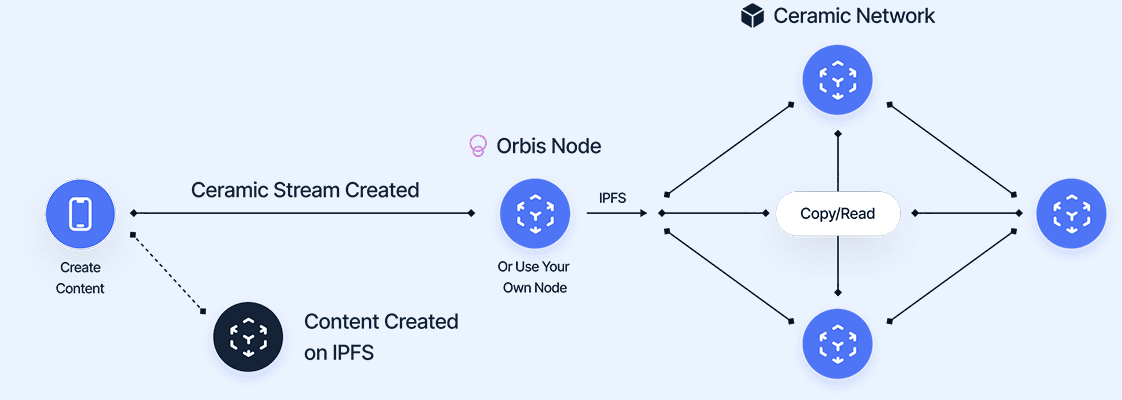How does Orbis work?
Overview

Orbis builds on top of established Web3 protocols and provides additional capabilities aimed at social networking.
When users interact with Orbis-powered applications, they interact with all the moving parts of these Web3 protocols.
There are no transaction fees, complex signing processes or setups.
Users log in with a simple human-readable signature and they are ready to go.
This allows anyone to build social apps, add social features to their apps and more without building a backend or gating access behind a complex onboarding process.
Users own their data in a fully decentralized and composable way.
Architecture
Orbis utilizes IPFS & Ceramic for our data layer, Lit Protocol for encryption & decryption and our own Orbis Nodes for indexing, building social graphs and exposing a simple-to-use API.
Ceramic
Ceramic is a decentralized data network built on top of IPFS.
It can be thought of as Apache Kafka (distributed message queue), but instead of data being siloed, it's interoperable, available globally and owned by the end user.
Data is submitted in the form of events which are organized into streams.
Events are stored on IPFS and create "commits" on a stream, updating its current contents.
Streams are mutable with all previous versions (commits) being publicly available and queryable.
How does Orbis utilize Ceramic
Orbis uses JSON Streams (called TileDocuments) to power everything, from overall project configurations to posts, messages, profiles, etc.
Orbis' JSON Streams have to follow a specific schema depending on the primitive.
You can find our Primitives and their schemas in the Primitives section.
IPFS
IPFS (short for InterPlanetary File System) is a distributed peer-to-peer network specialized in storing and sharing data. Put simply, it's a globally distributed file system - anyone can read from and write to it.
How does Orbis utilize IPFS
Orbis uses IPFS to store any media attached to user content and natively supports the IPFS protocol.
We also use IPFS indirectly by taking advantage of Ceramic.
Lit Protocol
Lit is a decentralized key management network that helps facilitate trustless access control and programmatic signing.
How does Orbis utilize Lit
Orbis uses Lit's distributed encryption & decryption to allow users to keep data private.
Users and builders can choose who and under which conditions can read (decrypt) the contents of their posts.
The same system is automatically put into action in Conversations.
While still a WIP, we will also support Lit's Cloud Wallets to enable frictionless onboarding of non-native Web3 users through social login.
Orbis Nodes
Orbis Nodes are the brains of the Orbis Protocol.
They coordinate all the moving parts of the above-listed protocols while providing additional functionality on top.
Orbis Nodes handle the indexing of Ceramic Data based on a set of rules and expose a simple-to-use API.
This allows us to build social graphs and provide access gating (who can write), moderation, and organization through contexts, analytics and more.
How does Orbis utilize Orbis Nodes
Orbis Nodes are used by all Orbis-powered applications.
Developers query and manage content via REST APIs exposed by Orbis Nodes.
All of this is abstracted away thanks to Orbis SDK and Components.
We are the only ones running Nodes right now, but our goal is to allow anyone to run their own dedicated Orbis Node or pool together with others to run the network.